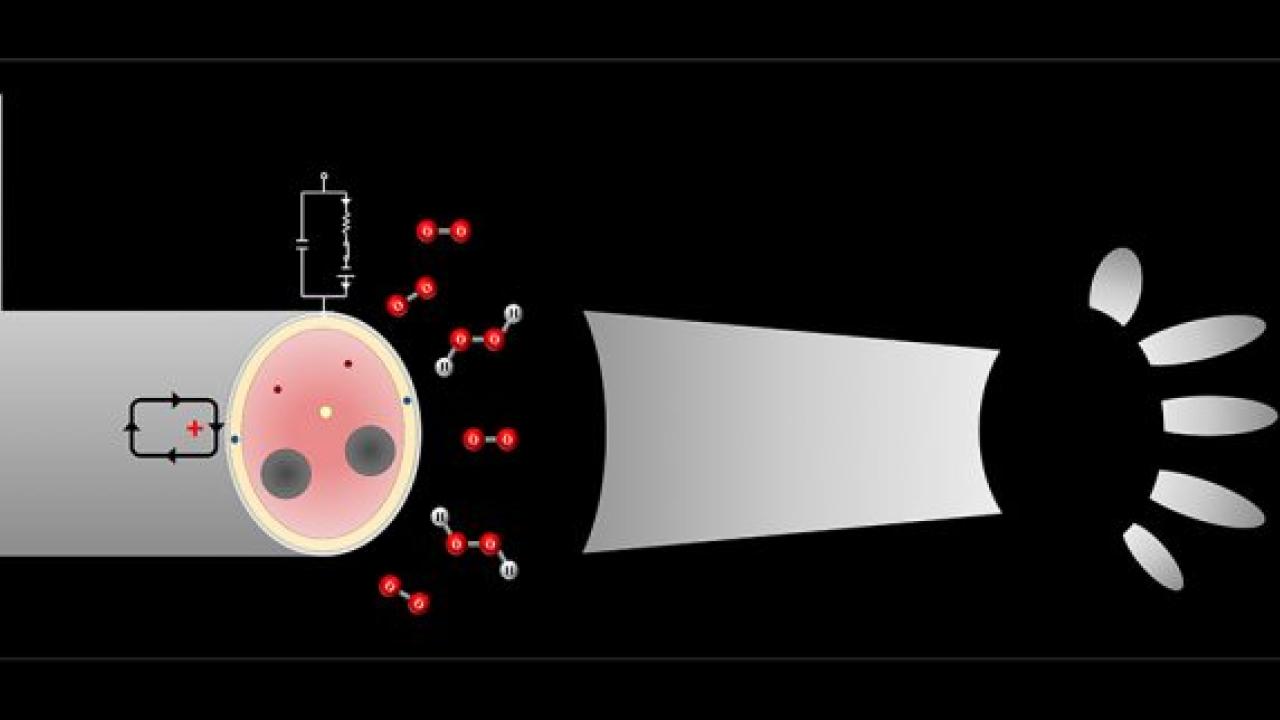
Exploring the Role of Redox and Bioelectric Players in Tissue Regeneration
Regeneration of a lost limb is arguably one of the seven wonders of biology. While you can’t grow a new arm, a humble tadpole can grow a new tail in a week. Seeking a better understanding of limb regeneration, Min Zhao, professor of dermatology and ophthalmology at the University of California, Davis, and graduate student Fernando Ferreira (also at University of Minho, Portugal) are studying the relationship of redox players, like oxygen and hydrogen peroxide, with bioelectricity, including membrane potential and electric currents, to pinpoint how a tadpole can regrow an amputated tail.
Previous work by Ferreira and Zhao demonstrated a close interplay between redox and bioelectric activities underlying tail regeneration in tadpoles. In the new study, using the same regeneration model, the researchers detailed the redox component in greater detail, uncovering a complex interaction in the regenerating tail between oxygen, reactive oxygen species and hypoxia-inducible factor.
“When we started this study we already knew – from decades old evidence – that electric currents were important for a successful regeneration, especially in amphibians; however, no evidence existed about ROS (reactive oxygen species) until very recently,” Zhao said.
Ferreira used cutting edge technology, an optical based probe called the optrode, that allowed him to measure the flux of oxygen around a wound or amputation. Immediately after injury, oxygen enters the wounded area and fuels the generation of reactive oxygen species, including molecules such as hydrogen peroxide, creating a hypoxic environment, the researchers found. This stabilizes the activity of a molecule called hypoxia-inducible factor, which influences electric currents that control the movement of cells into the wound.
Key results and the future of limb regeneration
According to the Amputee Coalition, there are 2 million people struggling with limb loss in the U.S, with around 185,000 new cases a year. Inductive regeneration, or the stimulation of regrowth and function of the lost limb, would be a near-miraculous treatment for these patients. This possibility is still far away and much more research is needed.
The research conducted by the team has one key and novel takeaway message: redox and bioelectric activities interact during the regeneration process. Tadpoles have a great capacity to regenerate, except during a well-defined period of metamorphosis. Interestingly, fine tuning of the redox and bioelectric states in this refractory period unleashes regeneration, opening hope that regeneration might be induced in mammals as well. The end goal for Zhao’s team is to be able to exploit redox and electric signals, perhaps by topical creams and eye drops, to enhance wound healing and regenerate damaged tissues.
A unique and comprehensive research facility
Zhao’s lab at UC Davis is establishing a comprehensive Redox-Bioelectric Sensing Facility able to quantitatively measure important redox players – oxygen and hydrogen peroxide – and bioelectric players – namely, minute electric currents, electric fields and ion fluxes (including the fantastic five: sodium, potassium, calcium, chloride and protons). The facility possesses unique ultrasensitive voltage sensing apparatus and other equipment including the optrode that uses light to measure oxygen content and flux. Ferreira was trained in the technique during a summer externship at the Woods Hole Marine Biological Laboratory (MBL). With the optrode, the lab is now uniquely equipped to study redox biology and bioelectricity together, Zhao said.
The work was published on Oct. 16 in the journal Nature Communications. Additional authors were Guillaume Luxardi and Kan Zhu, at UC Davis and Vijay Krishna Raghunathan, University of Houston. Financial support was from the NIH, the Air Force Office of Scientific Research and Research to Prevent Blindness, Inc.
Media Resources
- Early redox activities modulate Xenopus tail regeneration (Nature Communications)
- The “sixth sense:” How do we sense electric fields?
- Neural Stem Cells Steered by Electric Fields in Rat Brain
- Karina Montoyo, News and Media Relations
- This story first appeared on the UC Davis Egghead blog
